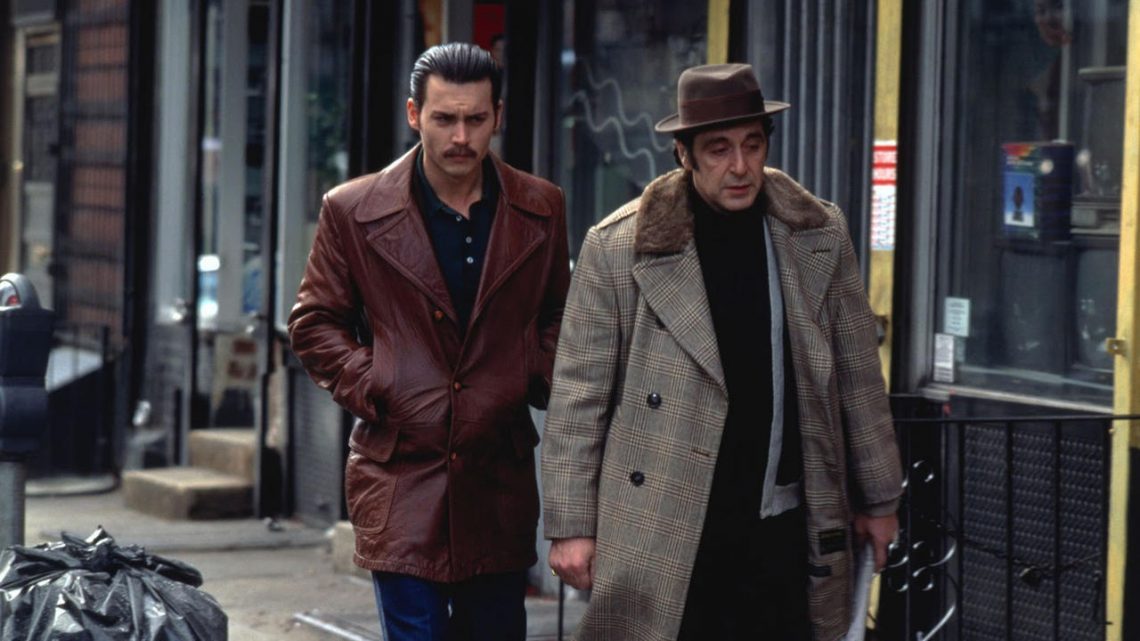
Was ‘Donnie Brasco’ a real undercover FBI agent?
Mike Newell’s 1997 mobster film Donnie Brasco signalled the start of a new chapter in the acting career of Johnny Depp, which saw him enter an underworld of criminals and drug addicts, playing characters such as Raoul Duke in Fear and Loathing in Las Vegas and George Jung in Blow. In both of those films, Depp was playing a character based on a real person, too.
Donnie Brasco, meanwhile, is a mafia movie in the tradition of Francis Ford Coppola, Martin Scorsese and Brian De Palma. Alongside Depp, Michael Madsen delivers an imposing performance as Bonanno mafia family caporegime Sonny Black, and Al Pacino does some of his finest work as Brasco’s partner in crime Lefty Ruggiero.
As it turns out, though, Brasco isn’t really a mobster. He’s an undercover FBI agent with a Sicilian family background called Joseph D Pistone, who’s been trained to act as a jewel thief in the mob. Despite multiple close calls, including an old friend recognising his real identity at an airport, he carries off his act so well that his assignment continues far beyond its initial remit of several months. After three years in the mob, Pistone has become attached to his role as Brasco as well as Lefty, and is looking forward to becoming a made man.
This step would require him to commit murder, however, and the FBI take him out of the mission through a fake arrest before he can carry out the killing he’s been tasked with. As the film ends, we read that Brasco’s undercover work was responsible for over 200 mobsters being charged with crimes and over 100 being convicted.
But how much of the movie is true?
The overwhelming majority of Brasco’s story in the movie is an accurate portrayal of what happened in real life. Pistone’s 1989 memoir Donnie Brasco: My Undercover Life in the Mafia, a True Story is the principal source material for its screenplay.
Pistone even admitted in the book that he wanted to stay in his role within the Bonnano family for longer than he was eventually able to, as he really did want to become a made man. Perhaps it was his family ties to Sicily that made him sympathise with the crew of mobsters he was involved with. In any case, it’s completely true that he genuinely became devoted to the family.
The other main characters in the film, including Lefty, Sonny Black, and Bonnano family boss Nicky Santora, are also entirely real. Only minor details diverge from Pistoene’s memoir for dramatic purposes.
For instance, Lefty gives his wife a message and hides his jewellery in their bedroom before leaving to a crew meeting near the end of the film, because he believes he’s going to be killed for allowing an FBI agent into the crime syndicate. The scene’s melancholic soundtrack heightens the pathos, making us feel for this man about to lose his life.
In reality, Lefty Ruggiero survived for 13 years after Brasco’s real identity was undercovered, spending most of that time in prison following his arrest by the FBI later in 1981. It was Sonny Black who was held primarily responsible for the Brasco situation by the Bonnano leadership and killed within a month of the FBI’s intervention.
Then again, Lefty is the character we empathise with more, given the hardships he endures and the bond he develops with Pistone through the course of the movie. His final words to his wife before leaving his wife behind for, he assumes, the final time really bring home the friendship the two struck up. “If Donny calls,” he says, “Tell him, if it was gonna be anyone, I’m glad it was him.”